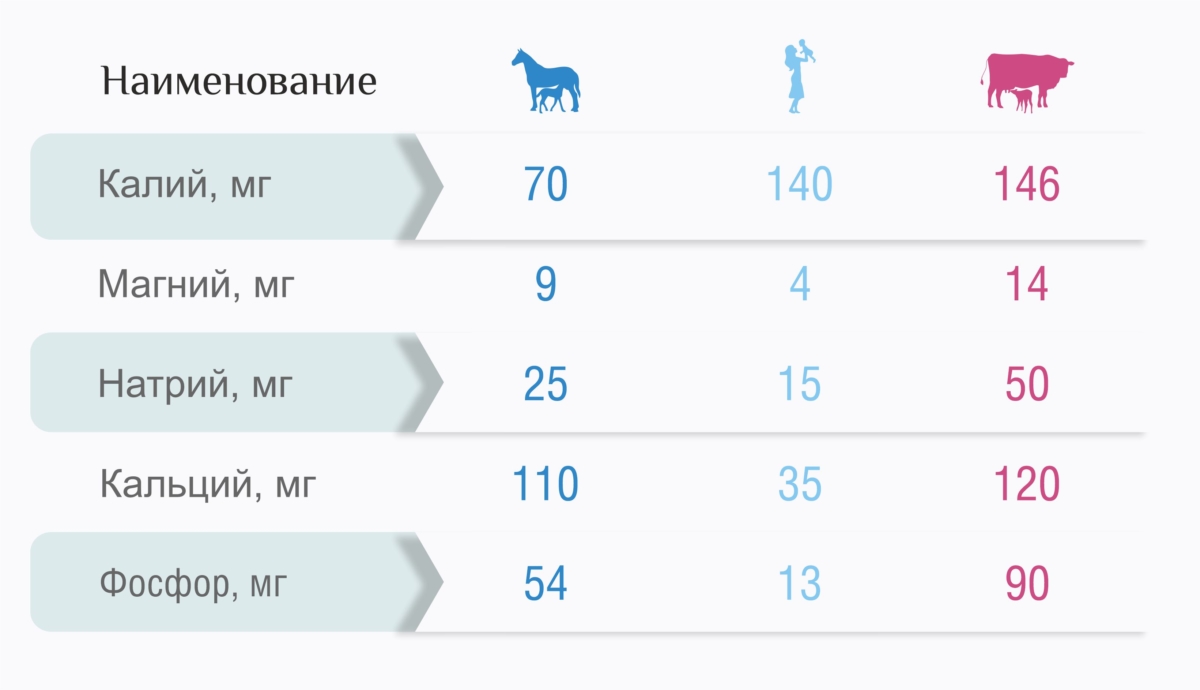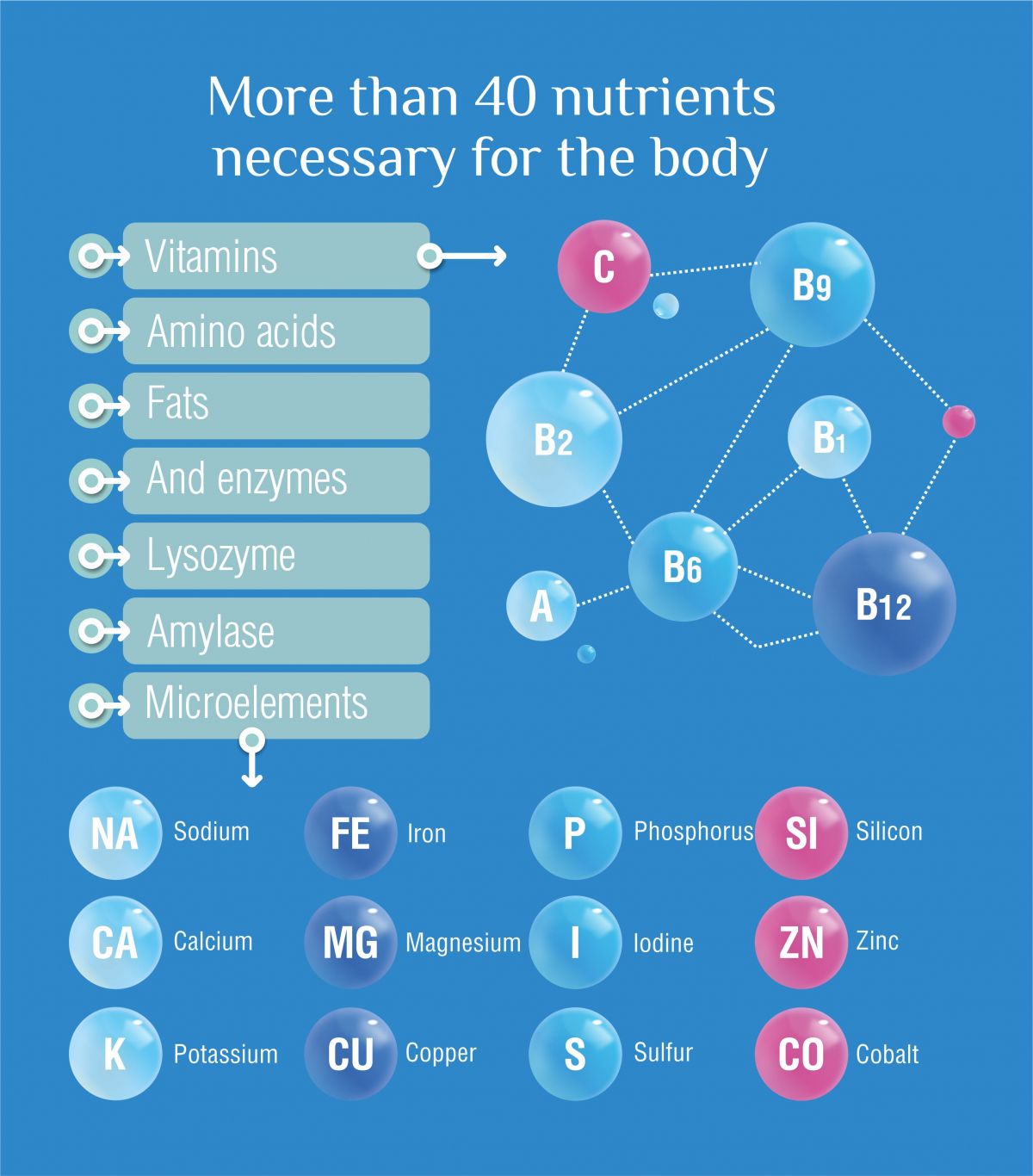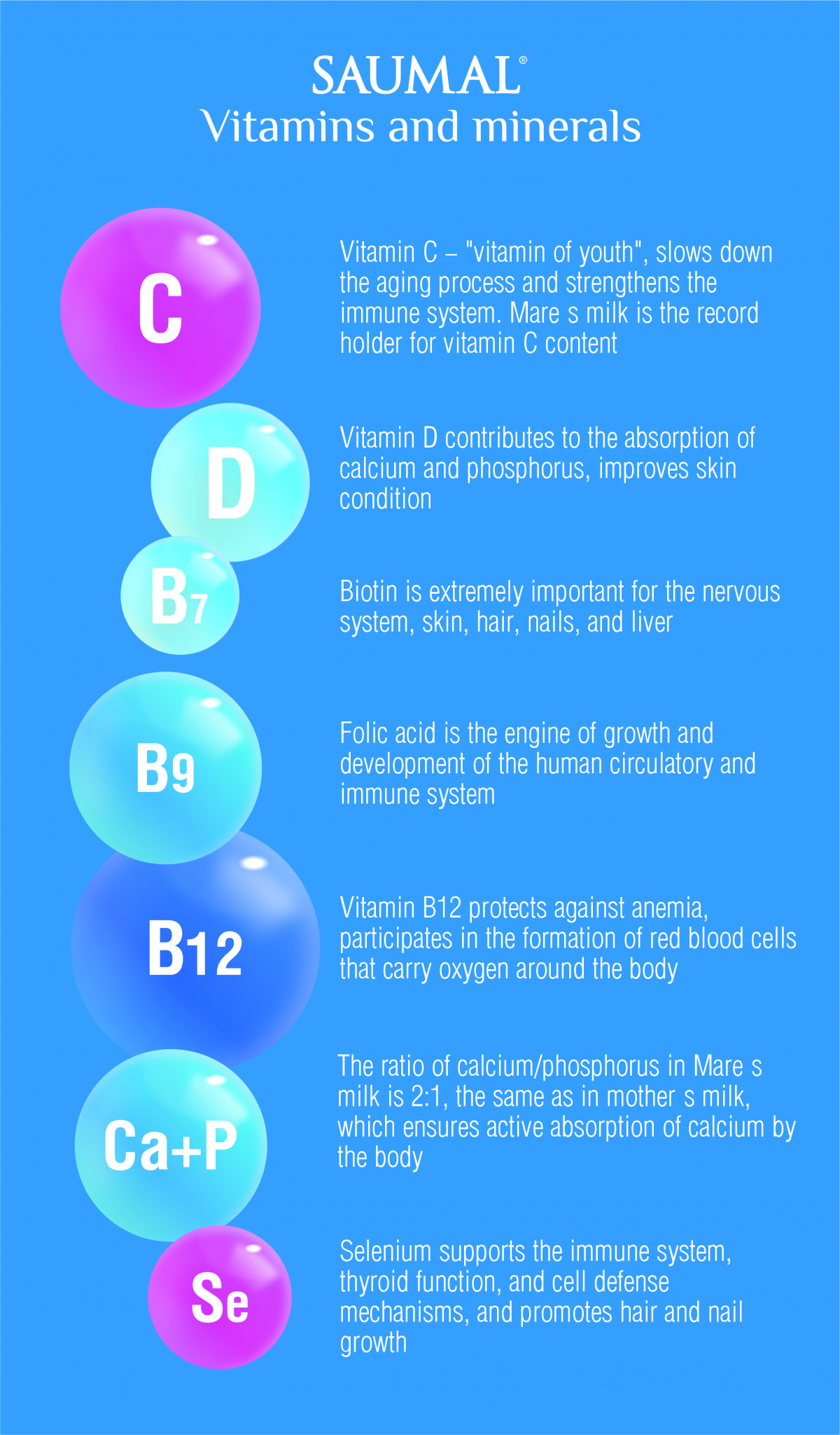Ingredients of Mare’s milk SAUMAL®
Our ancestors, using saumal for medicinal purposes, could not scientifically explain why it is so beneficial for human body. But thanks to the development of science and numerous international studies, we now know what exactly makes SAUMAL® so useful and unique for humans.
Any milk of mammals has the following composition:
proteins, fats, carbohydrates, vitamins and minerals, and water.
Proteins are represented by casein and whey proteins. In turn, whey protein consists of lactoglobulin, lactalbumin, albumin, immunoglobulins, lactoferrin, lysozyme, etc.
Comparison of the composition of Mare, breast and cow milk per 100 ml.
Comparison of the composition of Mare’s, breast’s and cow’s milk per 100 ml.
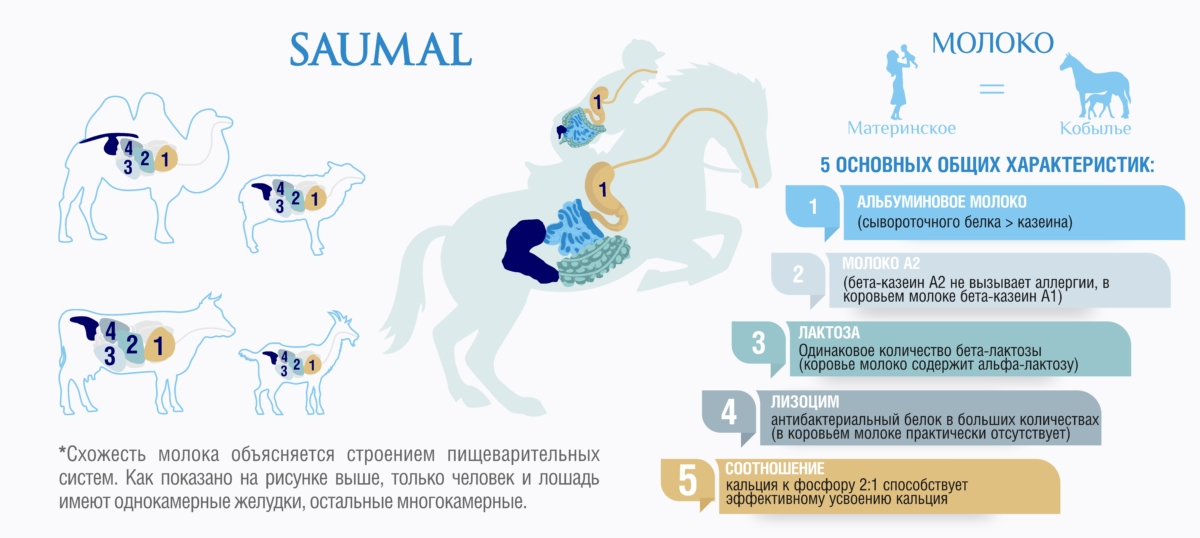
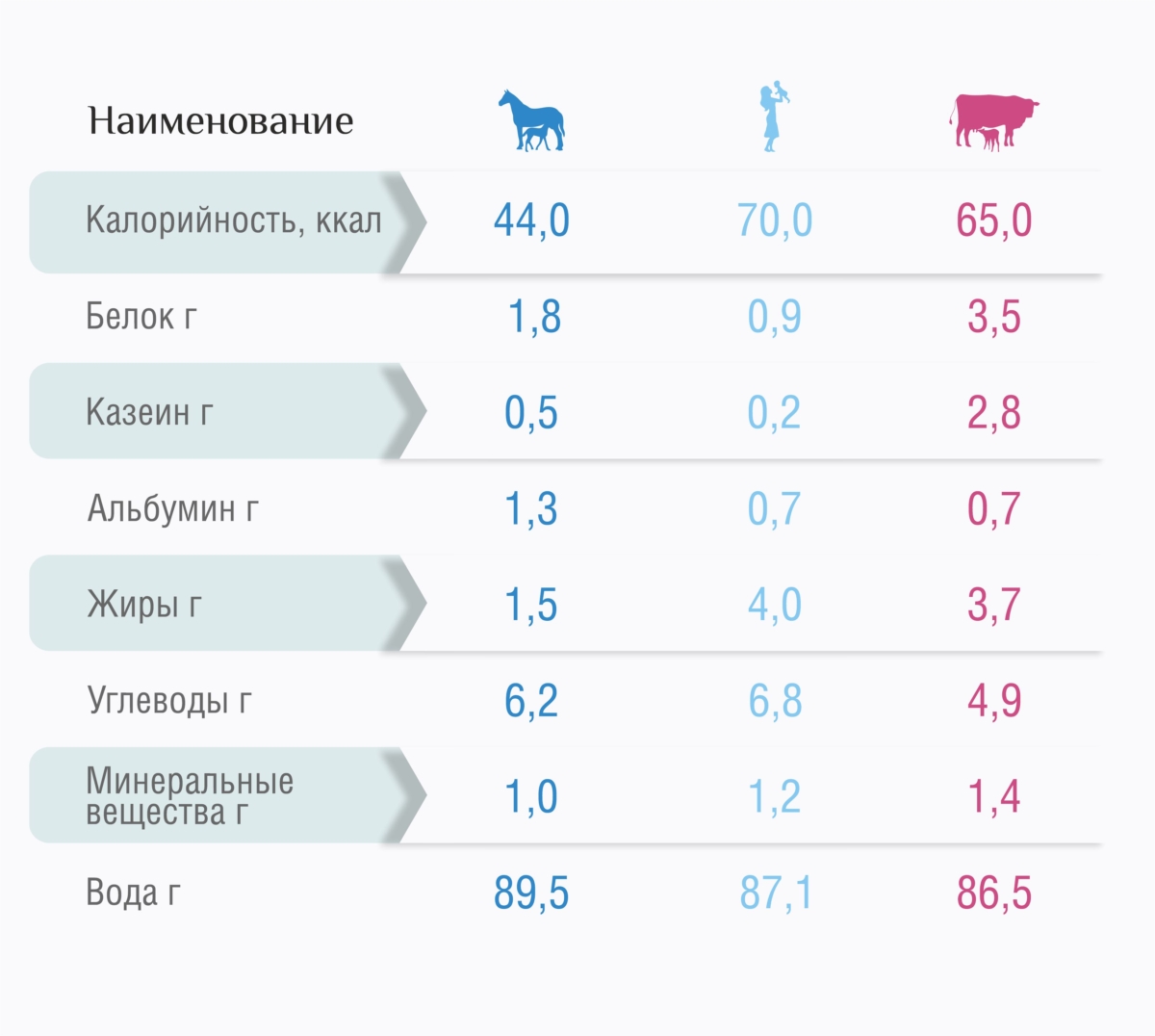

The composition of mare milk is as close as possible to mother’s milk and belongs to the albumin group, i.e.there are
more whey proteins than casein. While milk from other farm animals (with the exception of donkeys) is casein
group, since they are dominated by casein.
The similarity of mare and breast milk in composition is due to the similarity of the digestive systems of horses and humans.
They have unicameral stomachs of a similar shape. At that time, almost all herbivores had multi-chambered stomachs.

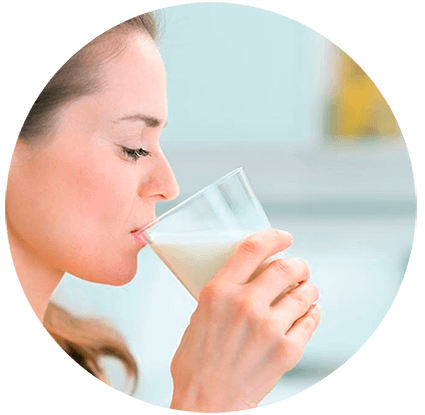
Mare’s milk whey proteins
There are twice as many whey proteins in mare’s milk as in cow’s milk and they are rich in essential amino acids. Proteins are chains of amino acids and in the intestines they are broken down into individual amino acids and absorbed by the body. They have a fine structure, therefore they are very well absorbed by the body.
Tryptophan
Among all the essential amino acids present in mare’s milk, tryptophan can be distinguished separately.
The body uses tryptophan to make niacin (vitamin B3), serotonin, and melatonin. Niacin is needed to convert carbohydrates, fats, and proteins into energy. Serotonin (called the “happiness hormone”) is involved in regulating mood, appetite, and sexual arousal. Melatonin regulates sleep and circadian rhythm. All this affects the reproductive, gastrointestinal and immune systems.
Lactoferrin
One of the most valuable proteins in mare’s milk, due to its high and versatile biological activity, is lactoferrin. Currently, lactoferrin is very promising in terms of the study and practical application of milk protein.
What functions does lactoferrin have?
First, lactoferrin is capable of killing bacteria and viruses. In some cases, lactoferrin directly interacts with the bacterial cell, destroying it, or indirectly: it takes on the iron ions necessary for the bacterial life. Thus, it provides protection against pathogenic bacteria that inhabit mucous surfaces. It is used as a natural antiseptic. It has antibacterial action against some gram-positive and gram-negative bacteria, as well as some viruses and fungi. Lactoferrin plays a modulating role in the immune response. Stimulates or suppresses various hormonal and cellular components involved in the prevention and / or relief of infections and inflammation.
Lactoferrin also exhibits fungicidal and antiparasitic activity, i.e. able to kill microscopic fungi and some parasites.
Due to the listed properties, lactoferrin is considered the main factor in the nonspecific immunity of a newborn child receiving breast milk as the main source of nutrition.
Lysozyme
Lysozyme is another important component of whey protein.
Lysozyme is a unique enzyme that provides innate protection against pathogenic bacteria, fungi and viruses. Basically, lysozyme in the body is found in places of contact with the environment – in the mucous membrane of the gastrointestinal tract, lacrimal fluid, saliva, nasopharyngeal mucus, etc.
Mare’s milk contains 4 times more lysozyme than breast milk. And in cow’s milk, lysozyme is found only in trace amounts.
Antibacterial action of lysozyme.
The oral cavity and pharynx serve as entry gates for pathogenic microorganisms. It is not surprising that in this biotope, in particular in saliva, there is a significant number of various antimicrobial molecules, among which lysozyme occupies a special place. Possessing two complementary mechanisms of destruction of bacteria (enzymatic and cationic), lysozyme reduces the likelihood of complete escape of pathogenic bacteria from its antibacterial action.
Also, lysozyme has significant antiviral and antifungal effects. The antimicrobial effect of lysozyme is due to its ability to destroy the biofilms of pathogenic bacteria and fungi. Translated from Greek, lysis means the destruction, dissolution of cells and their systems.
Lysozyme also has anti-inflammatory effects.
Breast milk lysozyme is considered an important factor in protecting premature, full-term newborns and infants against various infectious diseases.
Composition of essential amino acids
Mare’s milk contains such essential amino acids as:
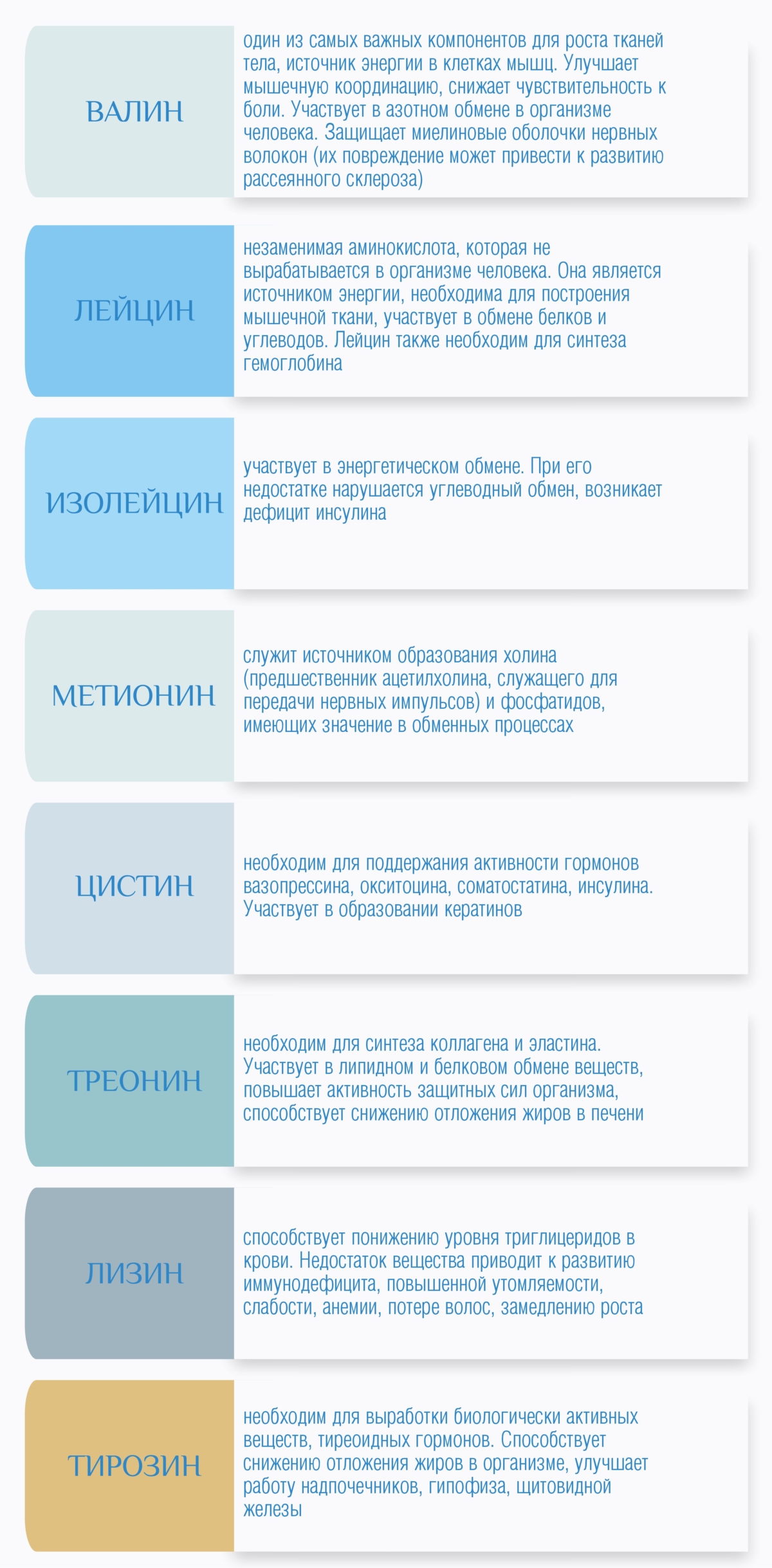
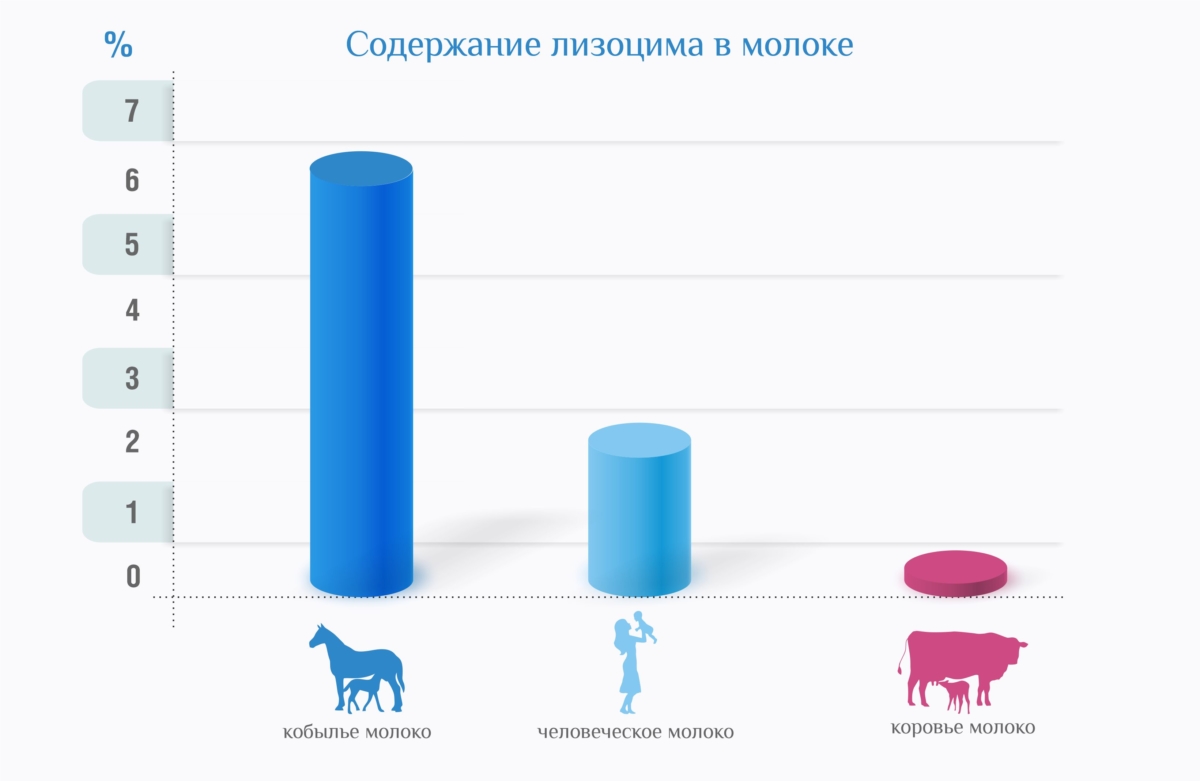
Mare’s milk contains immunoglobulins – complex proteins that perform the function of the body’s immune defense. Depending on the structure and properties, immunoglobulins (Ig) contained in milk are divided into 5 main classes: IgD, IgE, IgM, IgA, IgG. In mare’s milk, fractions of the last three classes predominate, which neutralize viruses and toxins, prevent bacteria from fixing on the surface of the epithelium, and activate leukocyte phagocytosis.

The fat of Mare’s milk

Milk fat, presented in the form of balls in milk, is, due to the relatively high content of oleic acid, a soft fat, and, since it is predominantly short-chain fatty acids, it is easily digestible.
Fats or lipids are the main source of energy in the body. They also play an important role in keeping our bodies hydrated when needed. There are a number of foods that contain lipids, so it’s not hard to get the minimum daily level, but the problem is excess.
Mare’s milk contains a small amount of fat, no more than 1.5%, and this allows you to maintain an adequate volume of lipids during its consumption.
It is noteworthy that mare’s milk contains little fat, but is mainly represented by healthy unsaturated fats Omega-3 and Omega-6, linoleic acid, linolenic acid, palmitoleic acid, oleic acid.

Saturated fatty acid
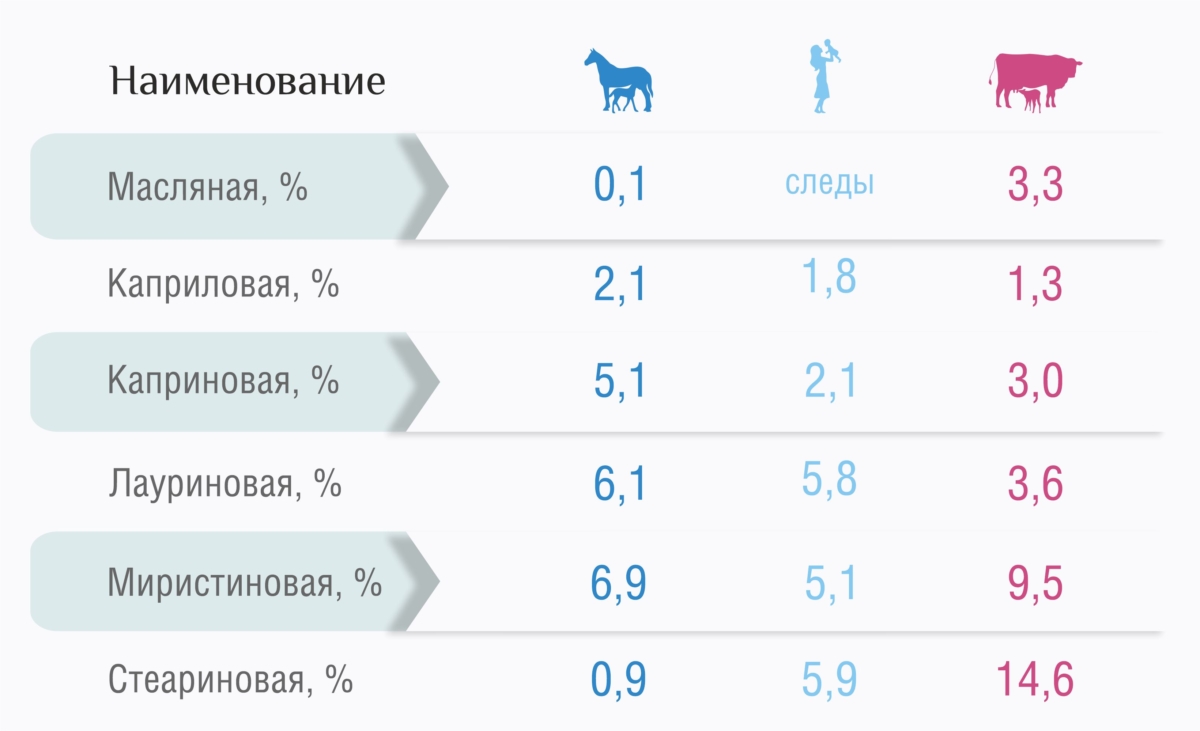
Monounsaturated fatty acid

Polyunsaturated fatty acid

Despite the low fat content, the similarity of the material composition of breast and mare’s milk is obvious. The similarity of the two types of milk can also be seen from the size of the fat globules, which are clearly smaller and thus easier to digest than the larger fat globules of cow, goat and sheep milk. Also, the casein particles (micelles) of mare’s milk are noticeably smaller in comparison with similar ones in cow’s milk, which also contributes to easier digestibility.
When comparing fatty acid samples of individual types of milk, attention is drawn to the fact that in saturated fatty acids in breast and mare’s milk the proportion of stearic acid is relatively low, while a high proportion of monounsaturated fatty acids in breast milk falls on oleic acid. The relatively low content of polyunsaturated fatty acids linoleic acid and linolenic acid, known as deficiencies in cow’s milk, as well as in goat’s and sheep’s milk, is countered by the high linoleic acid content in breast and mare’s milk. In addition, mare’s milk also contains a high proportion of the three main polyunsaturated fatty acids linolenic acid.
Mare’s milk fat contains essential fatty (linoleic and linolenic) acids, which are a factor in stimulating the immune system and nonspecific resistance of the body, thus blocking and destroying pathogenic bacteria, viruses and carcinogenic substances that enter the body
Composition of milk fat from bovine, goat, sheep, mare and breast milk Data as a percentage based on total fatty acids.
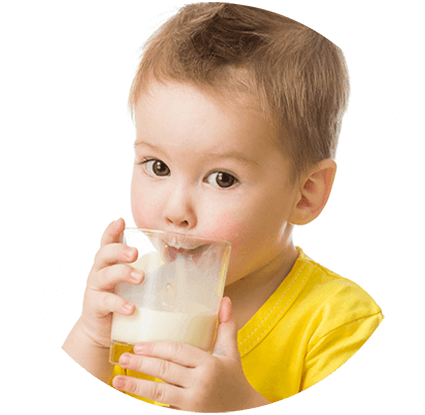
Lactose
Carbohydrates in mare’s milk are milk sugar – lactose.
The percentage of lactose in mare’s milk is the same as in mother’s milk.
Lactose is a great source of energy. This substance is able to optimize calcium metabolism in the human body. In addition, it effectively maintains the normal composition of the intestinal microflora, because milk sugar is the best food for lactobacilli, which prevent the development of putrefactive processes in the intestines.
Lactose is a powerful nervous system stimulant. Also, many experts claim that it is able to prevent the development of cardiovascular ailments.
And factors such as improper diet, fast food, chlorinated drinking water, alcohol, stress upset the balance of intestinal microflora. And when the balance between beneficial and pathogenic bacteria is disturbed, problems with the absorption of nutrients begin to arise and the occurrence of intestinal toxicity.
What is the difference between lactose in breast milk, Mare’s milk and lactose in artificial formula?
Lactose is one of the most important carbohydrates in breast milk. But formula manufacturers write that their products also contain lactose. Sometimes bottle-fed children have to be switched to lactose-free formulas, since their bodies are unable to process lactose.
So who is she, lactose, friend or foe?
It turns out that lactose in breast milk and in formula are two different isomers of lactose.
The main source of carbohydrates in human milk is beta-lactose (β-lactose). Lactose makes up 80-90% of all sugars in breast milk and provides up to 40% of a baby’s energy needs. Lactose in mare’s milk, as well as in women’s milk, consists of beta-lactose and in almost the same quantities.
Cow’s milk and, accordingly, mixtures contain alpha-lactose (α-lactose).
Unlike α-lactose, β-lactose in breast milk is absorbed more slowly in the small intestine, therefore it is broken down and absorbed in the lower parts of the small intestine, while α-lactose is in the upper.
Hydrolysis of β-lactose in the small intestine leads to the formation of glucose and galactose. Galactose is an integral part of galactolipids, which are essential for the development of the central nervous system (CNS). In addition, galactose is part of galactosyl-containing cell receptors responsible for the work of intracellular enzymes. Also galactose is a substrate for intestinal lactic acid bacteria.
Vitamins
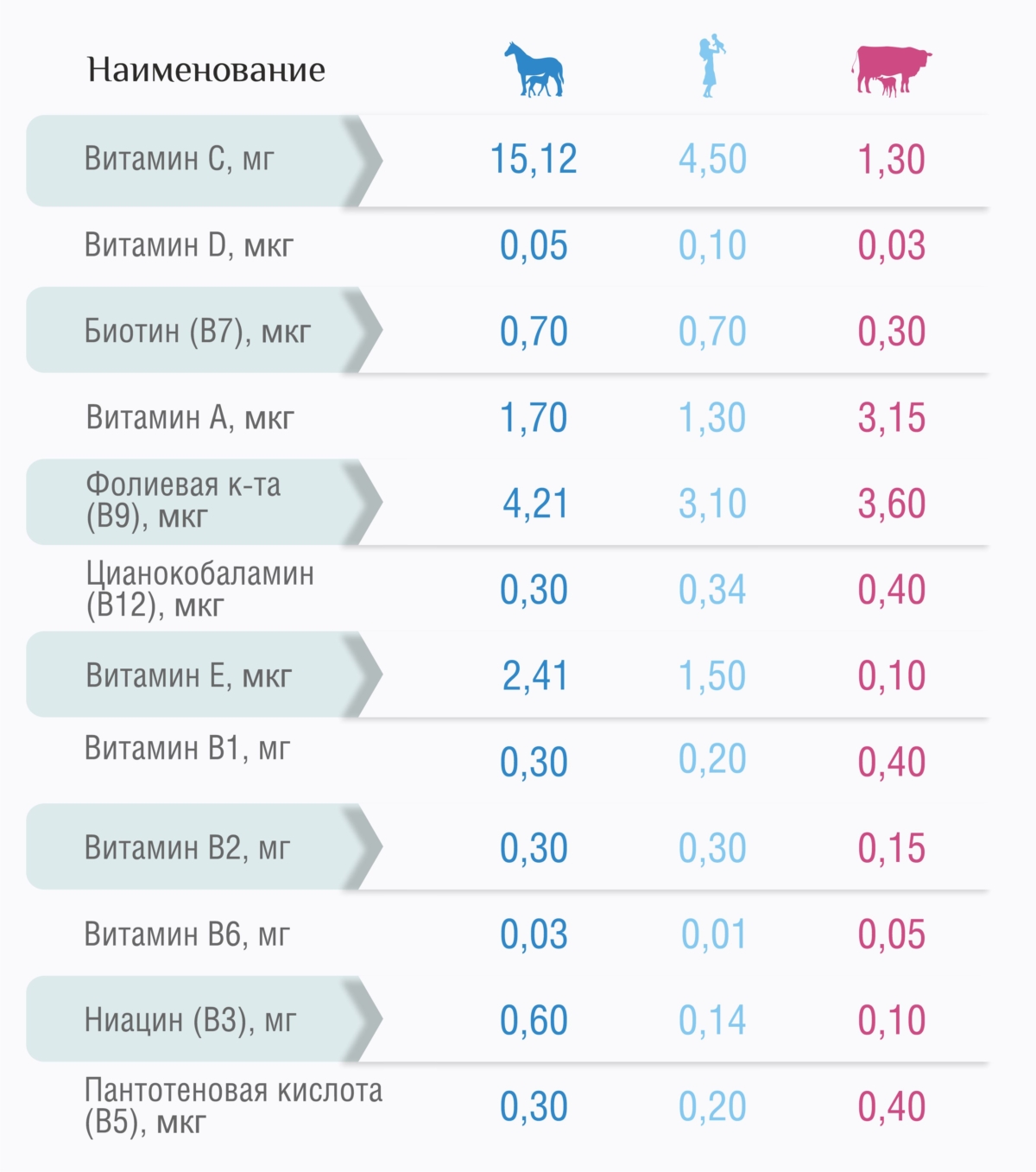
Only 500 ml of mare’s milk provides the body’s daily need for Vitamin C!
Evaluation of the nutritional value of mare’s milk obtained by freeze-drying showed that the organoleptic and biological properties practically do not differ from the original product, which, together with reliable packaging, allows the finished product to be stored for a long time without requiring special conditions. In addition, dry mare’s milk recovers quickly and is no different from fresh milk.
Trace elements
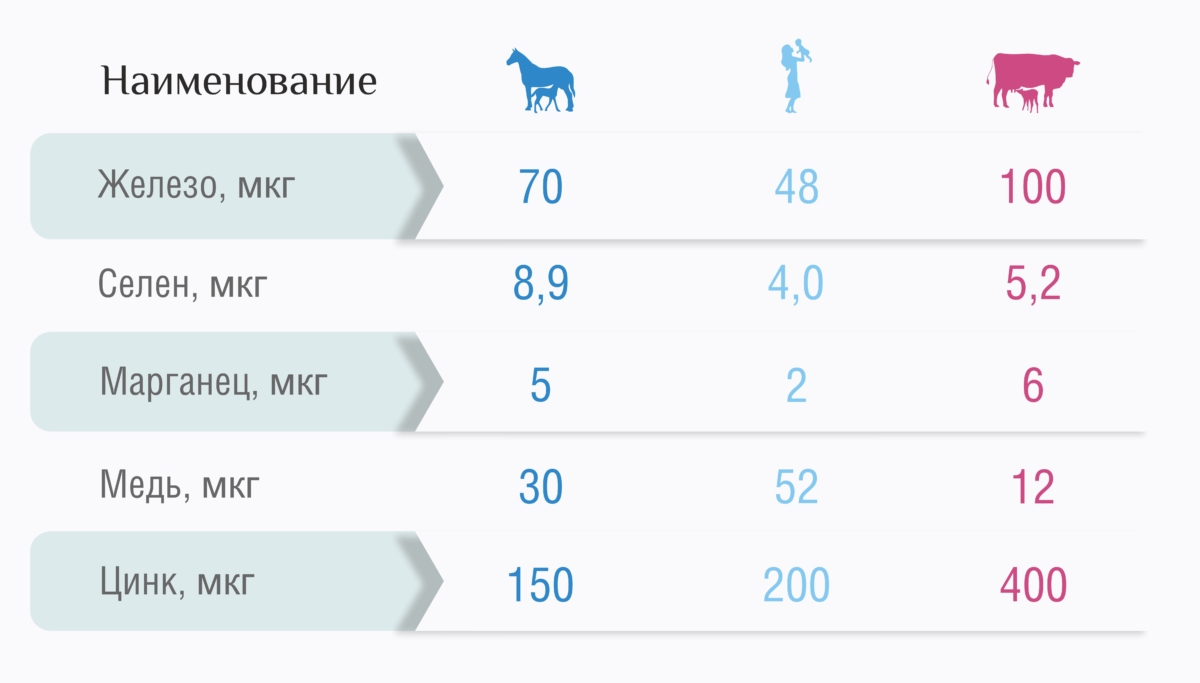
Macroelements
